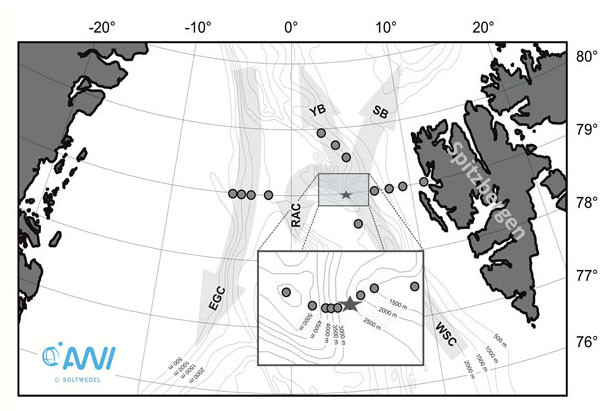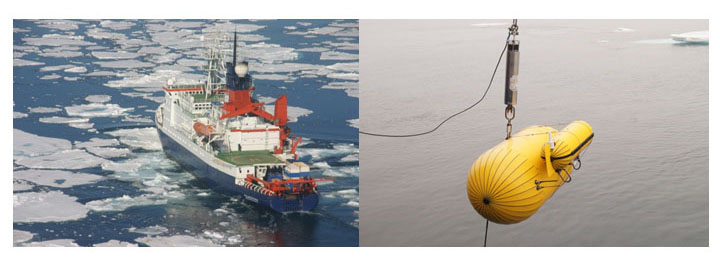HAUSGARTEN

The arctic marine long-term observatory HAUSGARTEN of the Alfred-Wegener-Institut Helmholtz-Zentrum für Polar und Meeresforschung (AWI) represents an interdisciplinary Earth Observation System operated since 1999 by the Deep-Sea Research Group at AWI. The observatory is located in the Fram Strait between 78°30’N and 80°00’N, and between 5°W and 11°E. HAUSGARTEN consists out of 21 permanent sampling sites along an East-West transect (station depths between 250 and 5500 m) and a latitudinal transect following the 2500 m isobaths, between ice-covered regions in north-westerly parts of the strait and the permanently ice-free region in southern parts of the area. HAUSGARTEN observatory is influenced by comparably warm and salty water masses transported northwards by the Western Spitsbergen Current (WSC) in the East; colder and less saline waters transported in southerly direction by the Eastern Greenland Current (EGC) dominate the waters masses in western parts of the Fram Strait
HAUSGARTEN is located in a vulnerable region of the world’s ocean, which will sensitively react to predicted climate changes. Variations in the gas exchange between the ocean and the atmosphere, affecting the composition of the planktonic community and thus the entire marine food web, are to be expected. From the early beginning, sampling stations at HAUSGARTEN observatory are visited at least once a year, usually in summer months. Three moorings carrying various sensors, autonomous water samplers, and sediment traps (to assess the flux of phytodetritus and dead zooplankton to the deep seafloor) are deployed at 2500 m water depth in the western and eastern Fram Strait. The various instruments collect physico-chemical data and biological samples to gather information about processes in the water column over the year. Another mooring at the central HAUSGARTEN site will be equipped with a winch system and a profiling sensor package to collect pCO2 and O2, and further biological data in the upper 200 m of the water column in the course of the year.
